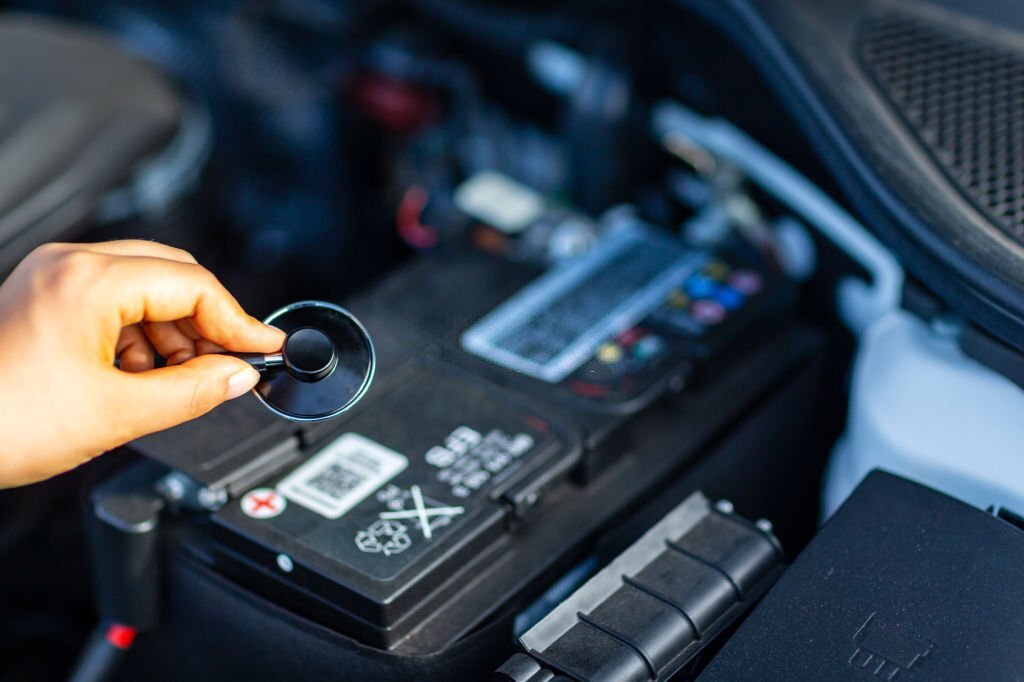Proper care and maintenance of a LiFePO4 battery are essential to ensure it works safely and efficiently. This guide will provide helpful tips on looking after your lithium batteries so that you can get the most out of your investment. From charging techniques, storage methods, and general advice, this article will provide all the information you need to keep your LiFePO4 battery in good working order.

How long does a lifepo4 battery last?
Lithium Iron Phosphate (LiFePO4) batteries are known for their long lifespans. Depending on the type of battery, you can expect to get anywhere from 3-10 years of life out of a LiFePO4 battery. The exact lifespan will depend on the quality and size of the battery, as well as how it is used and maintained. For example, use your battery in an application that requires frequent deep discharges or high temperatures. Your battery’s lifespan will be shorter than used in a less demanding application. To maximize the lifespan of your LiFePO4 battery, make sure to charge and discharge it properly and store it at room temperature when not in use.
Proper storing the LiFePO4 battery
Properly storing your LiFePO4 battery is essential for ensuring it works to its best and lasts a long time. When stored correctly, your LiFePO4 battery will maintain its charge capacity and provide reliable power whenever needed. With that in mind, here are some helpful tips for taking care of your LiFePO4 battery and keeping it in good shape.
Temperature guidelines
Store your LiFePO4 battery at room temperature or slightly below. Keeping the temperature too high can cause damage to the cells over time, so avoid storing your battery in direct sunlight or near heat sources like radiators.
How to store LiFePO4 batteries for the long term?
When storing your LiFePO4 battery for a prolonged period, keep the charge at 40-50%. This reduces cell stress and prevents overcharging or discharging too deeply when not in use. Ensure all connection points are free from oxidation or corrosion, which can lead to voltage drops when charging or discharging.
Additionally, store your battery in a cool, dry place. High temperatures can cause damage to the cells and lead to a shorter lifespan. Finally, check your battery every few months to ensure it’s still in good condition. If you notice any signs of corrosion or damage, replace them immediately.
Tips for storing LiFePO4 batteries in vehicles
1. Avoid Extreme Temperatures: It’s essential to protect LiFePO4 batteries from extreme temperatures, especially during storage. This includes high and low temperatures, as both extremes can damage the battery chemistry. Try to store the battery at a temperature between 10°C (50°F) and 40°C (104°F).
2. Monitor Battery Voltage: Before storing the battery, it’s essential to monitor its voltage and ensure it’s not too low or too high. If the voltage is outside of its specified range, this could indicate that something isn’t quite right with the battery and will require further investigation.
3. Fully Charge the Battery: To ensure that your LiFePO4 battery is ready for storage, you should ensure it is fully charged before placing it into storage. This helps to ensure that the battery maintains good performance levels when you return to use it again after some time in storage.
4. Keep Away from Liquid: Do not store LiFePO4 batteries near liquid sources such as water or oil. This could cause damage to both the electronics inside the battery and its overall safety performance if exposed to these types of liquids over an extended period in storage.
5. Monitor Storage Temperature Regularly: Even though you may have done your best to protect your LiFePO4 batteries from extreme temperatures while they are stored away, it is still important to regularly monitor their temperature with a thermometer or digital temperature loggers if possible so that you can be aware if anything changes while they are in storage and take action accordingly if necessary.
Charging your LiFePO4 batteries correctly
Like all rechargeable batteries, proper care and maintenance must be taken to ensure maximum performance of LiFePO4 battery. This section will provide helpful tips on how to charge and maintain a LiFePO4 battery for optimal performance properly.
How to properly charge LiFePO4 batteries?
Charging LiFePO4 batteries is relatively simple, but it’s essential to do so correctly to ensure the battery is not damaged. The first step is to identify the correct battery charger for your specific battery. Once you’ve selected the proper charger, connect it to the battery and plug it into a wall outlet. Ensure all connections are secure and no bare wires are exposed.
Once connected, set the charger voltage to match your battery’s. Most LiFePO4 batteries will have a charge voltage of 3.6V-3.65V per cell or 14.4V-14.6V for a 12V system. You should also check the manufacturer’s instructions for any other settings required for optimal charging performance.
Finally, monitor the charging process and make sure it stops once total capacity has been reached (usually indicated by a light on the charger).
How to avoid overcharging LiFePO4 batteries?
1. Use an Appropriate Charger – Make sure you use only chargers explicitly designed for LiFePO4 batteries. These chargers have a voltage cutoff feature that will stop charging the battery once it reaches its maximum capacity. If you use any other type of charger, you run the risk of overcharging it and damaging it permanently.
2. Monitor Battery Voltage – Most LiFePO4 batteries come with an onboard voltage monitor, making it easy to track how much charge is left in the battery. By regularly checking this monitor, you’ll be able to tell if your battery is getting close to being fully charged and thus needing to end its charging cycle – allowing you to prevent any potential damage caused by overcharging it.
3. Unplug When Not In Use – You should always unplug your charger from the wall socket and your LiFePO4 battery when not in use; this prevents any chance of overcharging due to a faulty connection or circuit breaker issue.
4. Check Temperature Regularly–The temperature of the cells in your LiFePO4 battery will increase while they are being charged, which is normal; however, excessive heat can cause severe damage, so it’s essential to check temperatures regularly and reduce or stop charging if any cells become too hot (over 50°C).
5. Set Timer Reminders – Setting up timer reminders on your phone or computer can help remind you when it’s time to check on your charging status and cut off power if necessary; this way, even if you forget about monitoring your battery’s charge levels, there will still be some protection against unwanted overcharging.
Discharging LiFePO4 batteries properly
How to properly discharge LiFePO4 batteries?
Discharging LiFePO4 batteries properly is essential for their health and longevity. Here are some tips to help you get the most out of your LiFePO4 battery:
1. Always charge the battery to its total capacity before discharging it. This will ensure that it has enough energy to power whatever device you use.
2. Monitor the battery’s voltage while discharging it, and make sure not to exceed its maximum discharge rate. If you do, you risk damaging the battery and reducing its lifespan.
3. When finished with your device, always recharge your LiFePO4 battery as soon as possible – this will help prevent over-discharge, which can lead to irreversible damage. Following these steps will help ensure that your LiFePO4 battery continues to work well for a long time!
How to avoid deep discharging LiFePO4 batteries?
To avoid deep discharging LiFePO4 batteries, the most important thing is to keep an eye on their voltage. LiFePO4 batteries should never be discharged below 2.5V/cell. If you find that the voltage of your battery is getting close to this level, it’s time to recharge it.
Another way to avoid deep discharging your LiFePO4 battery is to use a Battery Management System (BMS). A BMS monitors the voltage of your battery and will cut off power when it gets too low, preventing any further discharge. This can help extend the life of your battery and ensure that it isn’t damaged by deep discharge.
Finally, avoid leaving your LiFePO4 battery in a discharged state for too long. If you know you won’t use your battery for an extended period, charge it before storing it away.
Maintenance
How to check the state of charge of LiFePO4 batteries?
The first step is to measure the voltage of the battery. This can be done with a multimeter, which should read between 3.2 and 3.6 volts per cell when fully charged. If the voltage is lower than this, it indicates that the battery has been discharged and needs to be recharged.
Another way to check the state of charge is to measure the current going in and out of the battery using an ammeter. If there is more current going into the battery than coming out, it means it’s being charged, and its state of charge is increasing. Conversely, if there is more current coming out than going in, it’s being discharged, and its state of charge is decreasing.
How to balance the cells of LiFePO4 batteries?
The most common way to balance LiFePO4 batteries is using a battery balancer. This device monitors the voltage of each cell within the battery. It will automatically discharge any cell with a higher voltage than the others to bring them back into balance. It’s important to note that these devices must be used cautiously as they can cause damage if misused.
Another way to balance LiFePO4 batteries is through manual balancing. This method manually monitors each cell’s voltage and then discharges any cells with higher voltages until they match the others. While this method takes more time, it does not require specialized equipment and can be done without risking damage to the battery.
How to clean and maintain LiFePO4 batteries?
It is essential to take proper care of LiFePO4 batteries to ensure their longevity and performance. Before cleaning any LiFePO4 battery, disconnect the main positive and negative wires. Wear insulating gloves while cleaning, and never overcharge or discharge the cell. To store the battery, keep it at a state of charge between 40-60% and store it indoors during the off-season.
To clean the battery terminals, use a damp cloth or soft brush to remove any dirt and debris. Avoid charging the battery at currents higher than 0.5C, as this can cause overheating and negatively affect the battery’s performance. Lastly, unlike lead acid batteries, lithium batteries do not need a float charge while in storage, so keep the battery at no more than 100% charge.
In conclusion
Taking care of your LiFePO4 battery is essential for preserving its performance and lifespan. Following the tips outlined in this guide, you can keep your lithium batteries running smoothly and reliably. Regular maintenance and inspections are essential, as is avoiding extreme temperatures, overcharging, or discharging them too low. With regular care, your lithium batteries can provide years of reliable power. So take the time to look after them properly – it’s worth it!










